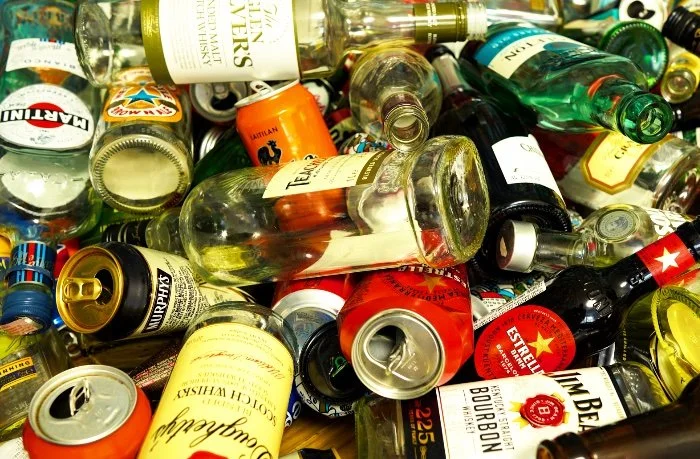Opioid treatment
Treatments for addiction problems have much in common regardless of the substance. A general, stepwise approach is…
① Stabilisation
② Relapse prevention
③ Lifestyle change
④ Harm reduction
What are the effects of opioids?
Opioids are primarily used in medicine for relieving moderate to severe pain, but are also highly addictive; they may be naturally derived from the opium poppy plant or synthesised in a laboratory.
Naturally occurring (opiates) are morphine, codeine, and opium extracted from the poppy plant: they are depressants of the nervous system. They are powerful analgesics, creating a feeling of euphoria, a detachment from what else is going on, drowsiness but, in high doses, shallow breathing and ultimately death from respiratory depression.
Semi-synthetics are made in by modifying natural opiates and include heroin, oxycodone, and hydrocodone. Effects are the same as for opiate drugs.
Synthetics are entirely made in laboratories and include methadone, buprenorphine, tramadol, fentanyl and nitazenes. Effects are similar to opiate drugs. Methadone and buprenorphine are the mainstay of opioid substitution therapies.
Fentanyl is 50 to 100 times more potent than morphine and the nitazenes even more potent. These opioids were originally synthesised in the search for non-addictive alternatives to morphine. Most users are unaware they are consuming nitazenes, as the drug is frequently mixed into or sold as other substances, such as heroin, oxycodone, or benzodiazepines.
There is good evidence for opioid dependence treatments. It is a good idea always to have naloxone (an opioid blocker) available in case of overdose especially from the potent opioids.
Stabilisation
Abstinence (detoxification)
Most people experience withdrawal symptoms if they go without heroin or opioids. Withdrawal symptoms such as muscle aches, stomach cramps and vomiting, insomnia, dysphoria start in the first 24hrs and may get worse for 1-2 days before subsiding. Opiate withdrawal is not necessarily severe nor is it life threatening.
Most people opt for a medically assisted detoxification. Buprenorphine (Subutex™️ Suboxone™️) is a useful medication in that it can be used for detoxification either from heroin or to switch as an opiate substitute. Lofexidine (Britlofex™️) suppresses withdrawal symptoms and is used alongside symptomatic medication for stomach cramps and muscle aches and insomnia.
The withdrawal from methadone can be unpleasant and last for several weeks: it is best to switch to buprenorphine for detoxification
Heroin is converted to 6-mono-acetyl morphine (6MAM) within a few minutes. 6MAM is detectable in urine for less than a day. It is converted to morphine which can be detected for up to 3 days.
Substitution
It is often assumed that all heroin or opioid users want a substitute prescription - as with any other drug some people are ready to stop using now and get on with a detoxification. Practitioners need to be ambitious for heroin and other opiate users and be positive about the goal of becoming drug-free. It is easy just to keep taking a substitute medication but few regret getting drug free.
Opiate substitution medication is an appealing quick fix for opiate dependence. It is easy to deliver and usually results in rapid improvement; however, beware of accepting substitution as all there is to treatment - lifestyle change is invariably the key to long term success. Substitute medication should be steadily reduced in step with the client’s improving social support and stability. For clients who are unable to achieve abstinence despite all possible efforts by their practitioners, then a maintenance prescription may be beneficial.
Substitute medications
Buprenorphine (Subutex™️ Suboxone™️) has less of an opiate effect than other substitutes but a much better safety profile; it is also available as a depot (Buvidal™️). Buprenorphine has a high affinity for opioid receptors and so will precipitate withdrawal if given while somebody still has opioids in their system, however the great benefit is that buprenorphine sticks to the opioid receptors thereby blocking, or partially blocking depending on the dose taken, the effects of supplementary opioid use. Given an adequate dose the blocking effect will last all day. It is an ideal opioid substitute and well suited to use as part of a recovery programme.
Methadone has the longest history of use as a substitute. It has a definite opioid effect, and so is liked by addicts, but it is long acting causing withdrawal symptoms to be prolonged so that methadone is experienced as difficult to get off. Diamorphine (heroin) is only prescribed in very particular circumstances - it is difficult to control diamorphine use just as it is with illicit heroin. Methadone and diamorphine are more likely to be maintenance prescriptions than a help to cutting down and abstinence.
Relapse prevention
The strong craving for opioids and pressure from drug dealers to keep their ‘customers’ addicted make it difficult for people dependent on opioids to abstain or moderate its use. What might trigger further use?
in the short term
underestimating the length of time feeling unwell
a lack of comfort food and comfort activities
forgetting to destroy contact details of drug dealers
in the long term
personal high risk situations
Rating high risk situations is the first task in a relapse prevention programme. Once identified and rated for the degree of temptation and the individual’s belief in their coping ability, new coping strategies can be identified, practised and implemented in real life.
Relapse prevention medication...
▷ Naltrexone (Nalorex™) blocks the effects of taking heroin or other opiates.
It will cause severe withdrawal if taken with opiates in the blood | effective if supervised
▷ Naltrexone depot long acting forms of naltrexone have limited availablity subject to medicines regulations | effective without supervision
Where methadone, buprenorphine or other opioids are used for maintainance prescribing it becomes a moot point whether they constitute a relapse prevention or harm reduction medication.
Lifestyle change
It is only feasible to get on with the challenge of lifestyle change, which may include sorting out mental health issues, once a person has some control of their opioid use, which can be quick to achieve. We believe social treatments are most likely to be effective, not just for problem users but also for their family and friends, but other approaches can be effective provided that they are well structured and well delivered.
Even with the most positive therapist and the optimal treatment, a number of opioid users find it too difficult to give up drugs, in which case a switch to a maintenance prescription can facilitate lifestyle changes. This should be a positive decision rather than something to drift into. It implies reducing the intensity of any psychosocial intervention, making contact much less frequent and minimising monitoring of the prescription. Substitute prescribing has potential for both costs, which tend to accumulate over time, and benefits, which are particularly strong in the early stages of substitution…
Some pros of opioid substitution
✔︎ Reduced mortality especially in early days
✔︎ Reduced use of illicit drugs and related crime
✔︎ Space to make necessary lifestyle changes
✔︎ Reduced injecting and related spread of blood borne viruses
✔︎ Improved diet and general health
✔︎ Psychological health improved
✔︎ Relationships including parenting improved
✔︎ Reduced drug debris on the streets
✔︎ Incentive to engage with behaviour change treatment
✔︎ Less exposure to other drug users
✔︎ Dispensing arrangements impose some structure
some cons of opioid substitution
✘ Significant annual health care costs
✘ Maintaining opiate dependence and its problems
✘ Maintaining drug using career and its problems
✘ Continuing involvement with other drug users
✘ Impaired social functioning: work, relationships, parenting
✘ Steady decline in physical health
✘ Monitoring interferes with leading a ‘normal’ life
Harm reduction
Generic harm reduction measures to improve health and wellbeing are to be applied throughout treatment. Opioid users commonly inject drugs and this will be the main target of harm reduction.
Watch this slide show by Dr Duncan Raistrick to learn more about harms and harm reduction…
Duncan Raistrick is a Consultant Addiction Psychiatrist
Setting a substance use goal, coping skills to handle high risk situations and lifestyle change are all core sessions of guided recovery..
effective interventions…












